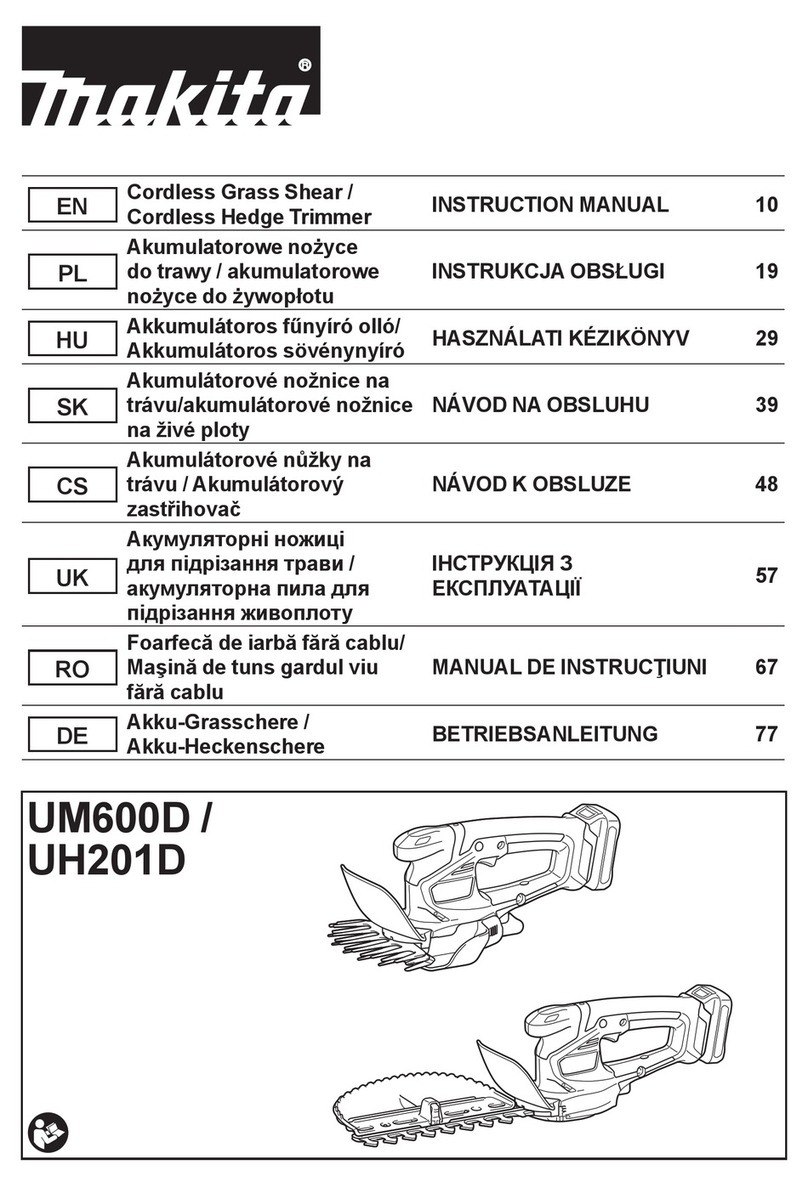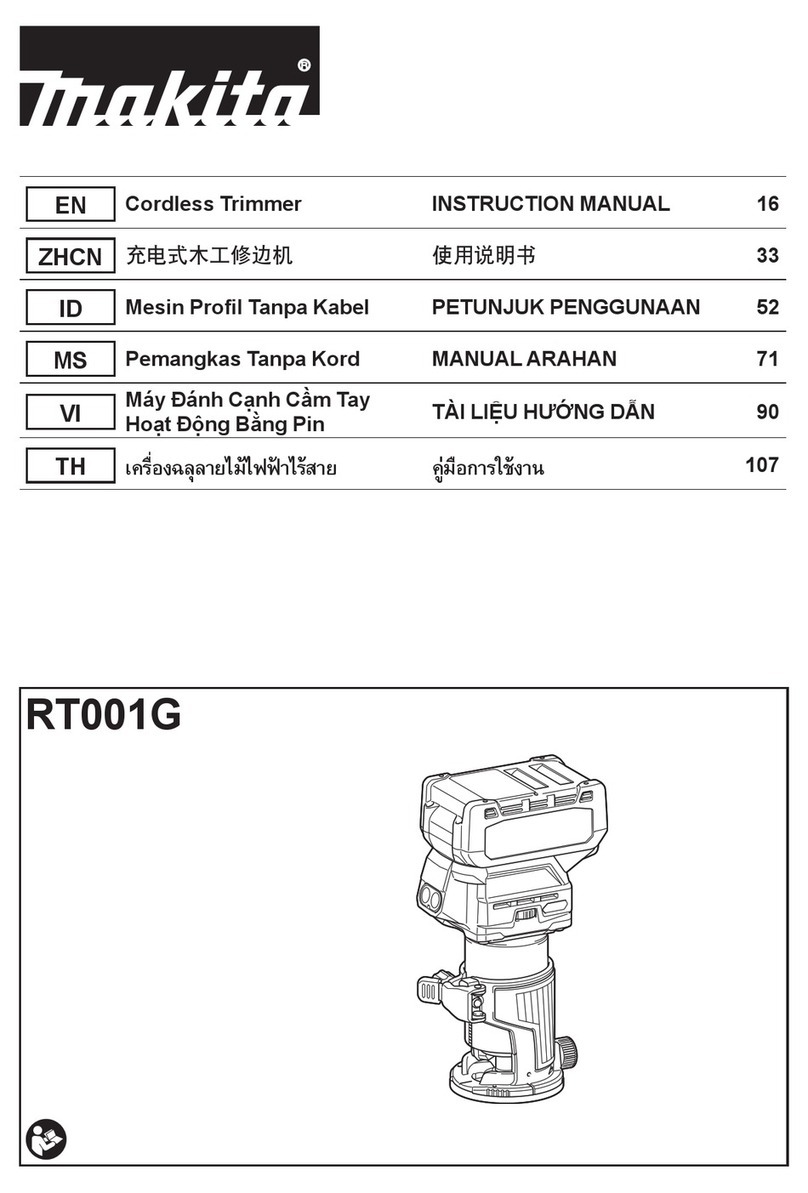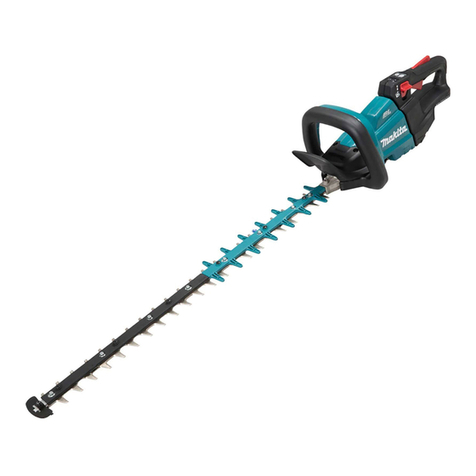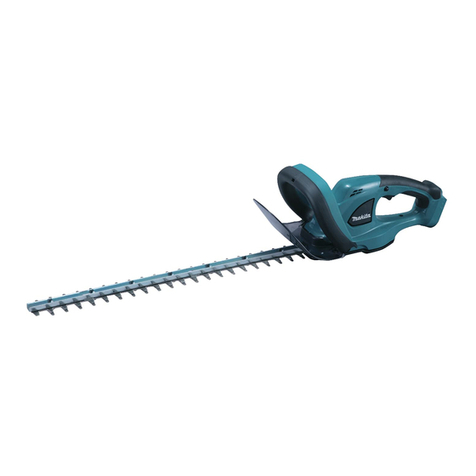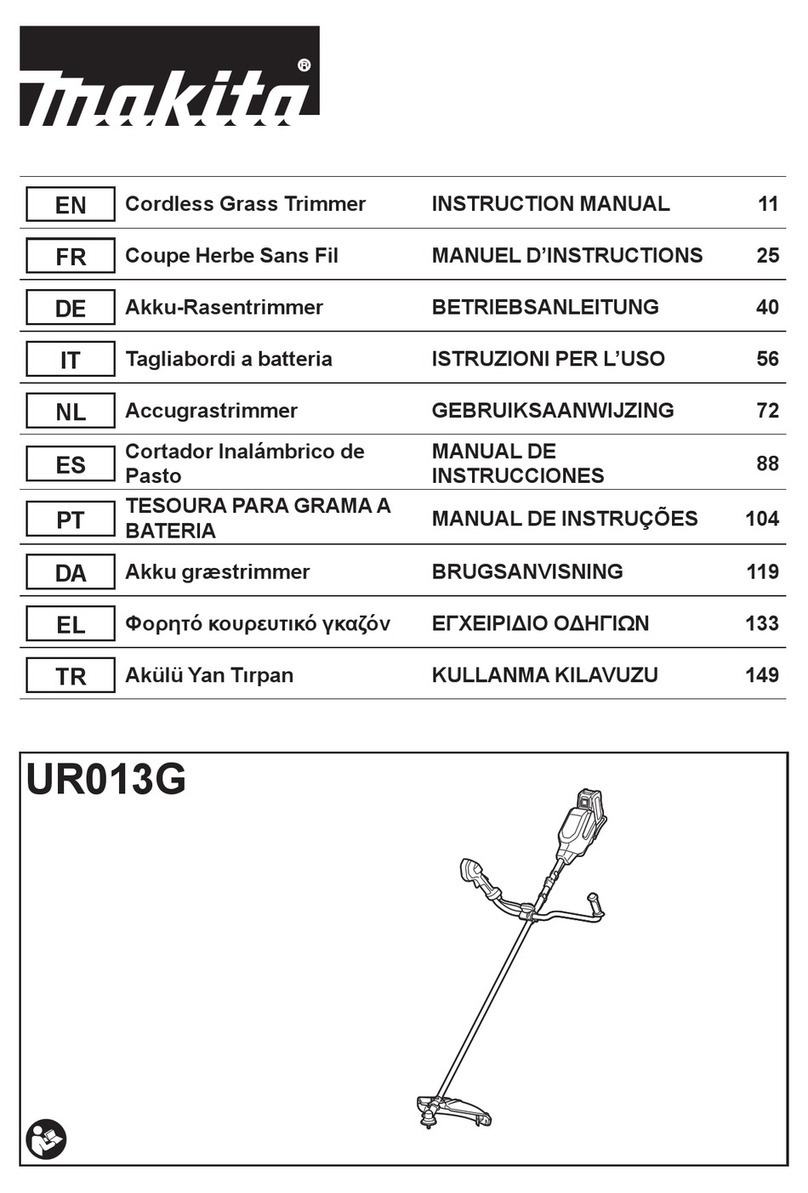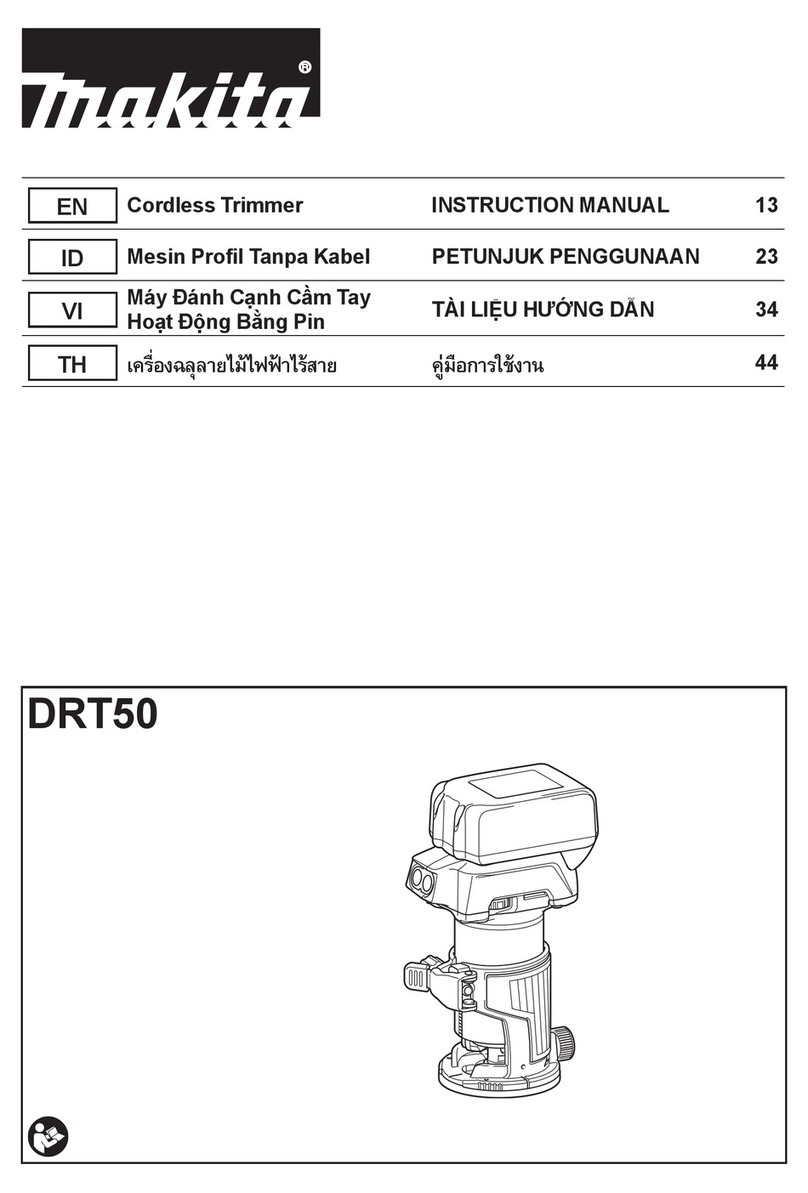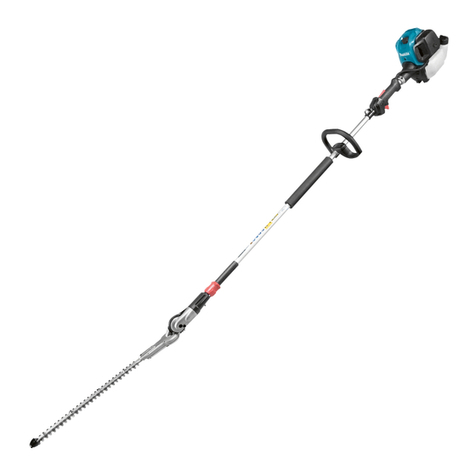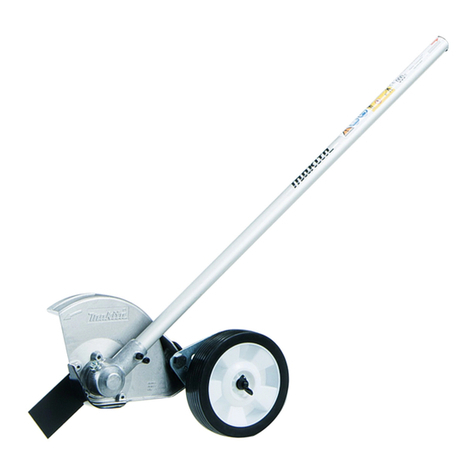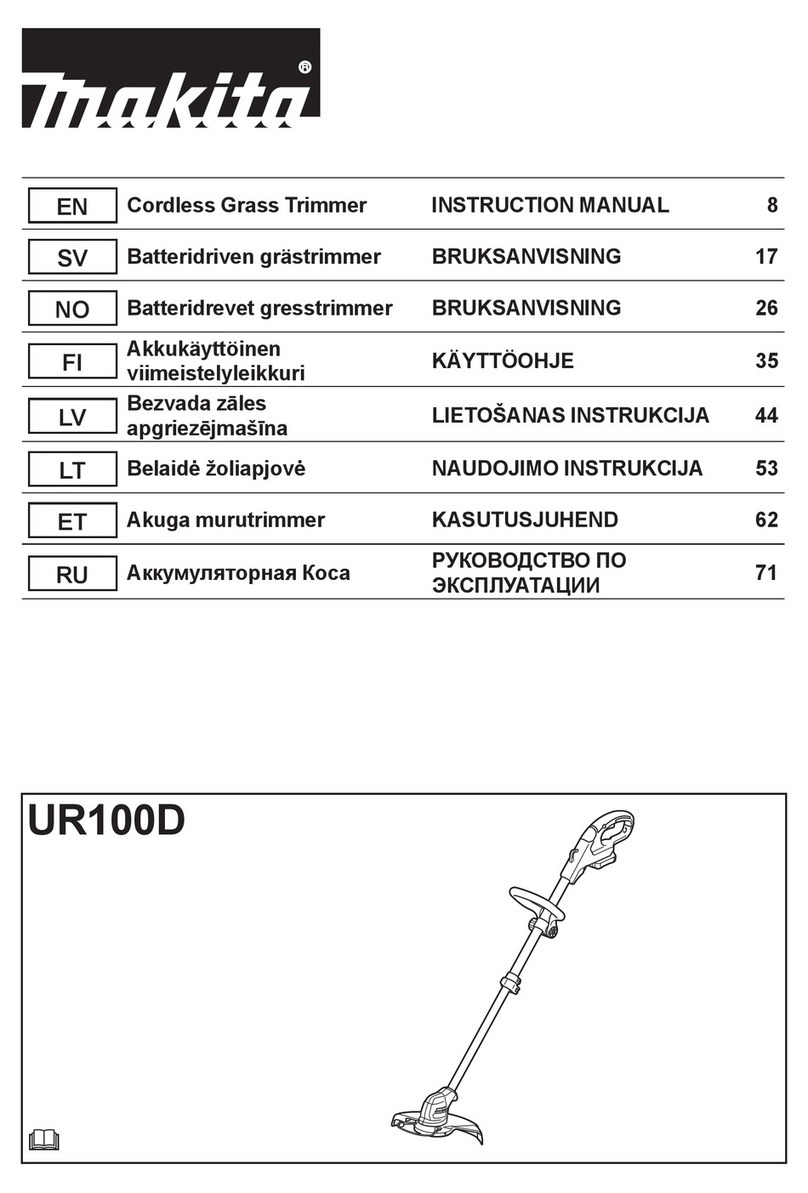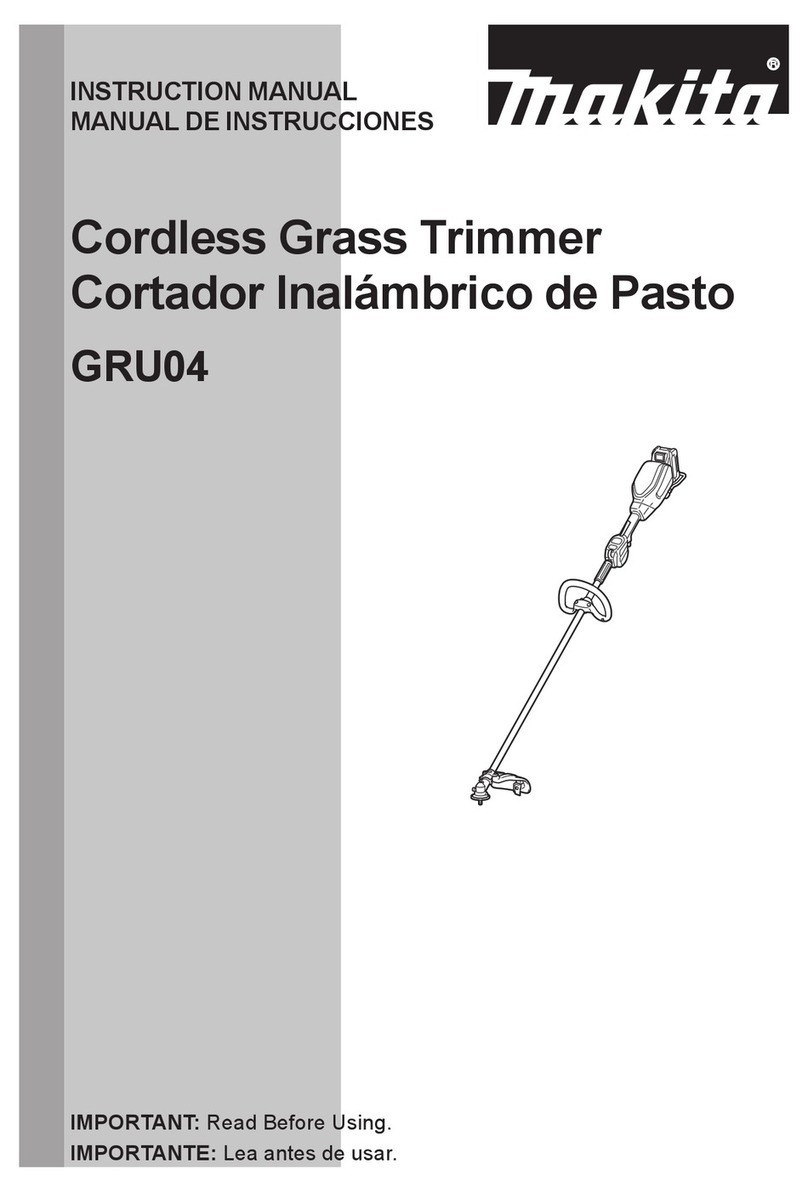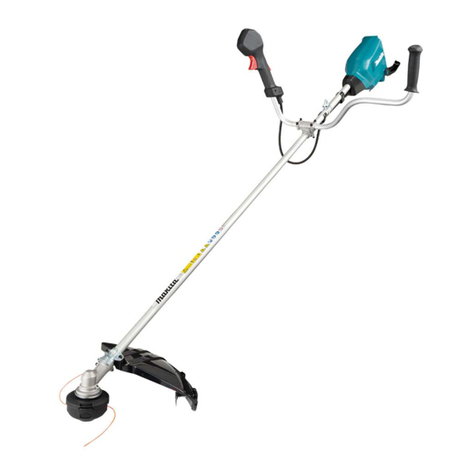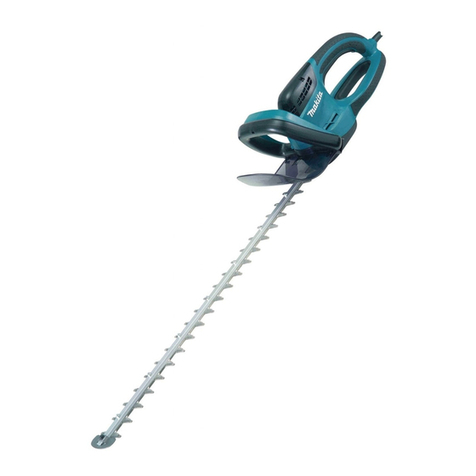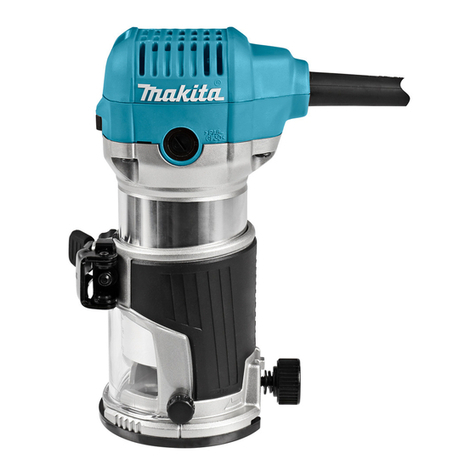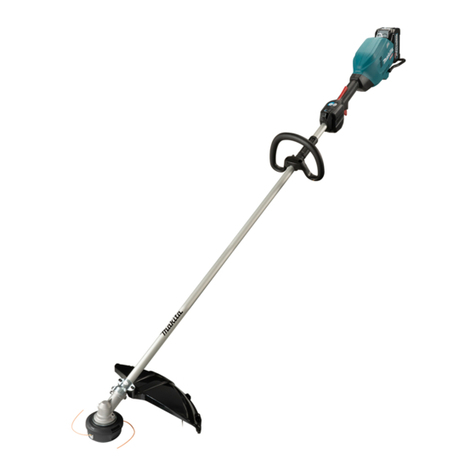9
18. Clean the hedge trimmer and especially the cutter
after use, and before putting the trimmer into
storage for extended periods. Lightly oil the cutter
and put on the cover. The cover supplied with the
unit can be hung on the wall, providing a safe and
practical way to store the hedge trimmer.
19. Store the hedge trimmer with the cover on, in a
dry room. Keep it out of reach of children. Never
store the trimmer outdoors.
SAVE THESE INSTRUCTIONS.
WARNING:
DO NOT let comfort or familiarity with product
(gained from repeated use) replace strict adherence
to safety rules for the subject product. MISUSE or
failure to follow the safety rules stated in this
instruction manual may cause serious personal
injury.
GEB070-2
CORDLESS GRASS SHEAR
SAFETY WARNINGS
WARNING! IMPORTANT READ CAREFULLY all
safety warnings and all instructions BEFORE USE.
Failure to follow the warnings and instructions may
result in electric shock, fire and/or serious injury.
Save all warnings and
instructions for future reference.
General instructions
1. To ensure correct operation, user has to read this
instruction manual to make himself familiar with
the handling of the equipment. Users insufficiently
informed will risk danger to themselves as well as
others due to improper handling.
2. Never allow people unfamiliar with these
instructions, people (including children) with
reduced physical, sensory or mental capabilities,
or lack of experience and knowledge to use the
equipment. Local regulations can restrict the age
of the operator.
3. Use the equipment with the utmost care and
attention.
4. Operate the equipment only if you are in good
physical condition. Perform all work calmly and
carefully. Use common sense and keep in mind
that the operator or user is responsible for
accidents or hazards occurring to other people or
their property.
5. Never operate the machine while people,
especially children, or pets are nearby.
6. Never use the equipment after consumption of
alcohol or drugs, or if feeling tired or ill.
7. The motor is to be switched off immediately in
case that the equipment shows any problem or
abnormal sign.
8. Switch off and remove the battery cartridge when
resting and when leaving the equipment
unattended, and place it in a safe location to
prevent danger to others or damage to the
equipment.
9. Don't force the equipment. it will do the job better
and with less likelihood of a risk of injury at the
rate for which it was designed.
10. Don't overreach. Keep proper footing and
balance at all times.
Personal protective equipment
1. Dress Properly. The clothing worn should be
functional and appropriate, i.e. it should be tight-
fitting but not cause hindrance. Do not wear either
jewelry or clothing which could become entangled.
Wear protective hair covering to contain long hair.
2. Wear eye protection and stout shoes at all times
while operating the machine.
Electrical and battery safety
1. Avoid dangerous environment. Don't use the
equipment in damp or wet locations or expose it
to rain. Water entering an equipment will increase
the risk of electric shock.
2. Recharge only with the charger specified by the
manufacturer. A charger that is suitable for one
type of battery pack may create a risk of fire when
used with another battery pack.
3. Use power tools only with specifically designated
battery packs. Use of any other battery packs
may create a risk of injury and fire.
4. When battery pack is not in use, keep it away
from other metal objects, like paper clips, coins,
keys, nails, screws or other small metal objects,
that can make a connection from one terminal to
another. Shorting the battery terminals together
may cause burns or a fire.
5. Under abusive conditions, liquid may be ejected
from the battery; avoid contact. If contact
accidentally occurs, flush with water. If liquid
contacts eyes, additionally seek medical help.
Liquid ejected from the battery may cause
irritation or burns.
6. Do not dispose of the battery(ies) in a fire. The
cell may explode. Check with local codes for
possible special disposal instructions.
7. Do not open or mutilate the battery(ies).
Released electrolyte is corrosive and may cause
damage to the eyes or skin. It may be toxic if
swallowed.

